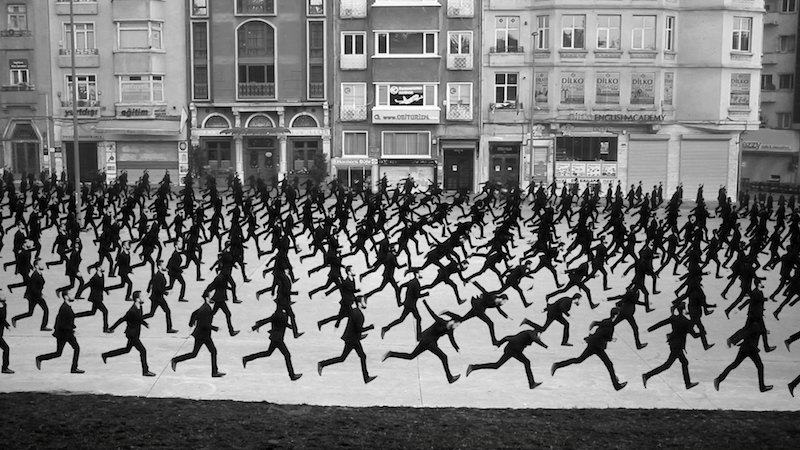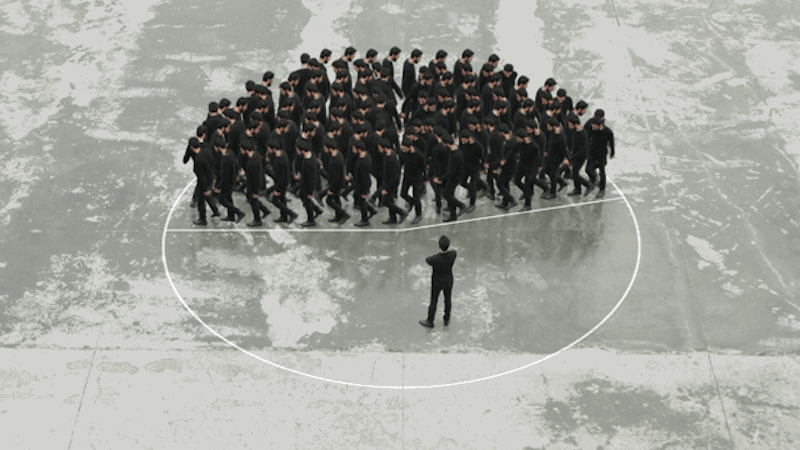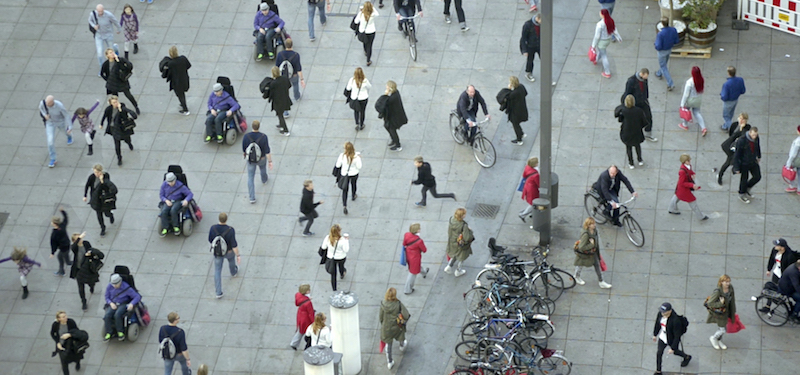 All works © Erdal Inci
All works © Erdal Inci
The art world can be a chaotic place, in which countless artists have simultaneous shows at the same time, making it impossible to catch them all! A few artists, however, you just cannot miss: Appearing frequently in various formats, from social media to fairs, from festivals and exhibitions to performances, media artist Erdal Inci from Ankara, Turkey presents his works broadly and keenly. While he originally graduated at Hacettepe University in Painting in 2005, Erdal has since been practicing with paint, photography, new media and video art between Istanbul and Berlin. Having thus strong bounds to Berlin, Erdal explained me his new work called `Berlin Wall- a data visualization` and he spoke about his thoughts on the future of new media art in Turkey.
Mine Kaplangı: Erdal, you are one of the most followed Turkish new media artist in social media. Why do you think that is?
Erdal Inci: If we talk about publicity, I could easily say the medium I use, the “GIF”, caused that. I didn't expect that and I was not making those works as to be GIF works particularly. 6-7 years ago I was experimenting with animation and video to create 2-3 seconds long, perfect loops. Then I decided to share them as GIFs and started to post them on my blog. I like the challenge of creating an extremely short visual that is not boring. In the "Clones Project”, for example, I shot a simple movement as if I was walking, running or swinging in public spaces and compressed phases of movement into 2 or 3 seconds. Like that, 10 minutes of performance can be compressed into one single second. I think those surreal repetitive moving patterns alienate us from the stages that I used: public spaces.
MK: How would you evaluate the movement of new media art in Turkey's art scene?
EI: Even though it has a short history, I believe that it is very promising. The obstacle is that we have limited chances to find exhibition spaces or sponsors. I think the WAVES exhibition at BLOK art space (waves-waves.com) was a perfect example to encourage people in art scene to open their spaces. Curated by Ebru Yetiskin, ten Turkish new media artists made a great job proving that new media is a big part of the scene’s future. It was also one of most visited exhibitions of 2015, next to the museums and art centres of course. There are also some established foundations and institutions, such as Borusan Contemporary, which has large collections dedicated only to new media arts.

MK: For an article called "Turkey, the land of super-rich” you made a gif-animation for ZEIT ONLINE, a national newspaper in Germany. How did you come across this project?
EI: Last year, when I spend some time in Berlin, I made couple of video works for my solo show. Zeit Online recognised me through social media and asked me to work for them as a commissioned artist. They didn't order a particular topic, so I could freely choose what the works should be about. I thought about making some kind of data visualisation that would fit to a newspaper and thus came up with the subject of inequality of wealth distribution in Turkey. The data was very dramatic; the richest one percent owns 54 percent of the national wealth, which makes the Turkey the second worst injustice country in the whole world after Russia. Visually you see 100 identical figures on a pie chart divided into two parts as 54% and 46%, representing the distribution of wealth. After I made the visual, it was featured with an article on that survey on zeit.de
MK: In 2015 you spend time in Berlin and had the exhibition "Mass Ornament" at Galerie Michael Schultz. How did you experience living in Berlin?
EI: I traveled through Berlin for two or three months before the show and started to live and produce there. Eventually, we exhibited a collection of videos shot in the streets of Istanbul and Berlin. I received lots of good feedback, both for the exhibition and online, giving me a chance to afford my stay there longer. I think there is no need to repeat why Berlin is a great city for artists. Berlin and Istanbul will be even closer and closer in competition in the near future.
MK: "Berlin Wall: a data visualization", one of your recent works, was just exhibited at Plugin New Media Arts Section at Contemporary Istanbul Art Fair. You created a vertical Berlin wall and then brought it down into ruins again. Why did you think of rebuilding the wall vertically?
EI: My goal was to rebuild the whole structure virtually according to its data, such as blueprints and the number of segments used, in order to envisage its real size. I needed to decide how to compose forty-five thousand pieces that used to make up the wall. Placing them vertically created a contrast of its real function and form. At the same I could fit the whole structure into a single frame. Eventually, I ended up placing them in the same proportions, all from of a single segment. So it has some sort of a fractal design. The animation work is a collapsing simulation of that structure – a metaphor of the "Fall". I also did a photo-manipulation to envisage the actual size of the wall, the colossal structure, which was 240 metres high, was placed in Alexanderplatz in true scale. Another element of this project, which I would like to realise, is to have a 3D printed version of this fractal design in a 1:1 scale. That would be 3,6 meters. One could easily recognise its form from a distance and upon closer inspection, the wall could be viewed in its entirety.
MK: Which artists have influenced you throughout your practice?
EI: I am always influenced by minimalist music composers, such as Philip Glass, Arvo Part or Steve Reich. Generally, traditional visual artists, such as painters, sculptors and architects influence me more than digital artists. It might sound a bit pretentious, but I think we are approaching a new era, similar to the renaissance in visual manner. The fundamental change will happen, when we overcome the restriction of frame compositions by creating a virtual space-time composition and consuming it without any external factors.

MK: Are you planning to try other mediums in the future or continue working with gif-animation-videos?
EI: I have recently made the Berlin Wall piece with computer generated animation and I would like to keep on trying different media and disciplines, learning to handle them and continue experimenting.
MK: What are your upcoming projects for 2016?
EI: I will have a solo-show at ArtOn Istanbul Gallery in May 2016, in which I am planning to show a new data-visualisation work about Istanbul and its socio-economic life, alongside with my work “Berlin Wall” with a new installation. I also would like to collaborate with dancers and performers for my “Clones Project” series in the upcoming months, so that I can remain behind the camera rather than being in front of it.
http://erdalinci.com
http://erdalinci.com


 All works © Erdal Inci
All works © Erdal Inci
Portrait of Erdal Inci, photo © Sarah Ungan
